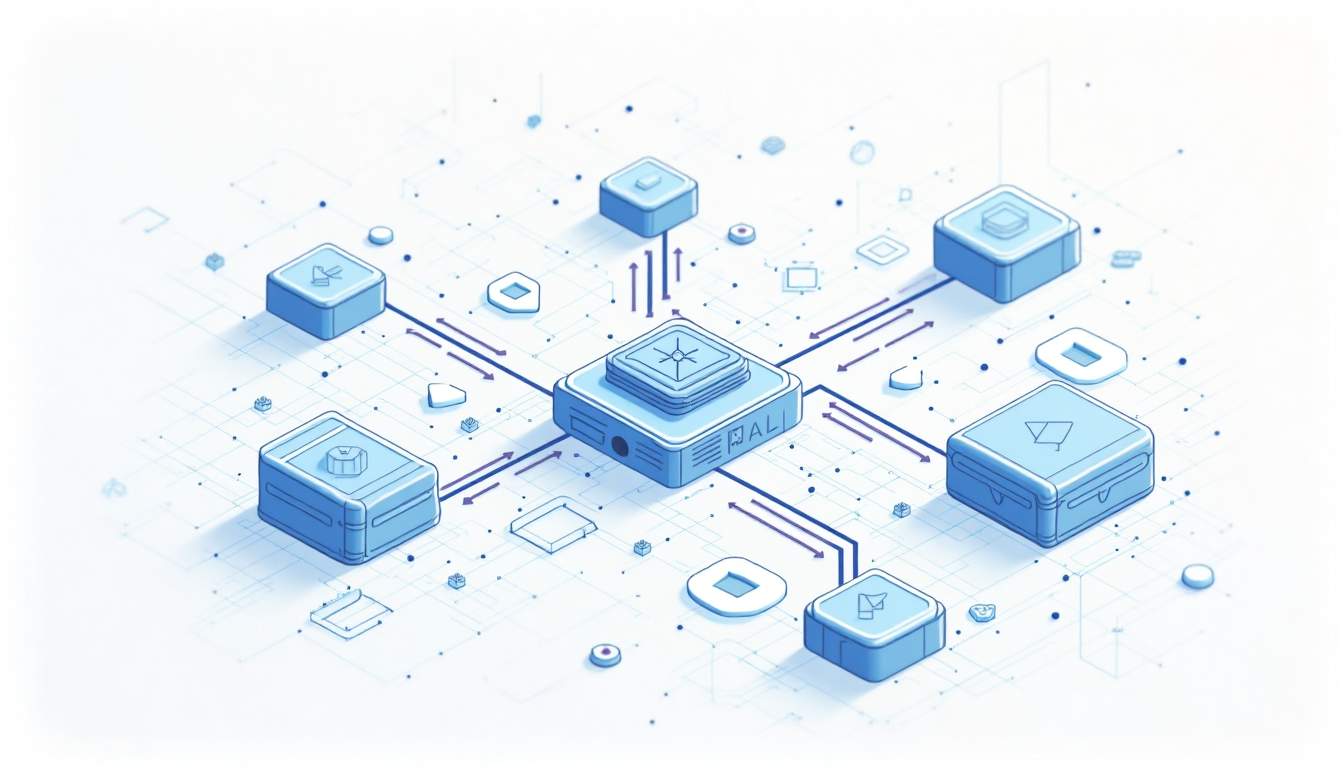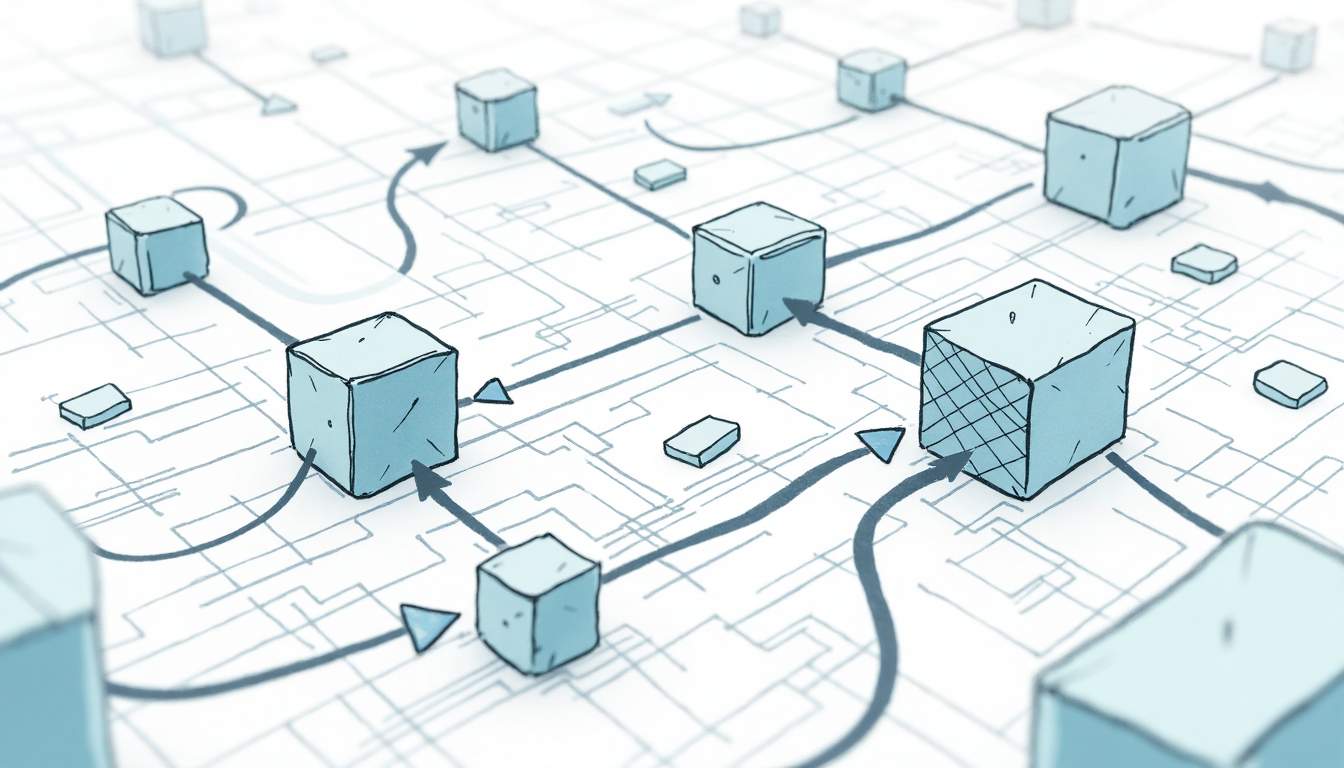Understanding Blockchain API Routing
Blockchain technology has transformed various industries by providing decentralized solutions that enhance transparency, security, and efficiency. As businesses increasingly adopt blockchain, the need for effective communication between applications and blockchain networks has grown. This is where Blockchain API routing comes into play. This article delves into the intricacies of Blockchain API routing, exploring its significance, functionality, and best practices.
What is Blockchain API Routing?
Blockchain API routing refers to the process of directing API requests to the appropriate blockchain nodes or services. APIs (Application Programming Interfaces) serve as intermediaries that allow different software applications to communicate with each other. In the context of blockchain, APIs enable developers to interact with blockchain networks, retrieve data, and execute transactions.

Routing in this context ensures that requests are efficiently handled, reducing latency and improving the overall user experience. By effectively managing how requests are sent and received, developers can optimize their applications to work seamlessly with blockchain technology.
Importance of API Routing in Blockchain
The importance of API routing in blockchain cannot be overstated. As blockchain networks can be complex and decentralized, proper routing ensures that requests reach the correct node, which is crucial for maintaining the integrity and speed of transactions. Here are some key reasons why API routing is essential:
- Efficiency: Proper routing minimizes the time taken for requests to be processed, enhancing the performance of blockchain applications.
- Scalability: As the number of users and transactions grows, effective routing allows for better management of resources and load balancing across nodes.
- Reliability: By routing requests to multiple nodes, developers can ensure that their applications remain functional even if one or more nodes go down.
How Blockchain API Routing Works
Understanding how Blockchain API routing works involves examining the components and processes involved in the communication between applications and blockchain networks. The routing process typically involves several steps:
1. Request Initiation
The process begins when an application sends a request to the blockchain API. This request can be for various purposes, such as retrieving transaction data, querying smart contracts, or submitting new transactions.
2. Routing Logic
Once the request is initiated, the routing logic determines the best node to handle the request. This logic can be based on several factors, including:
- Node availability and health
- Geographical location of the nodes
- Current load on each node
By considering these factors, the routing logic can optimize the request handling process.
3. Node Communication
After determining the appropriate node, the request is forwarded to that node for processing. The node then executes the requested operation, such as querying data or validating a transaction.
4. Response Handling
Once the node processes the request, it sends a response back to the application through the API. The application can then handle the response accordingly, whether it involves displaying data to the user or confirming a transaction.
Challenges in Blockchain API Routing
While Blockchain API routing is essential for effective communication, it also presents several challenges that developers must address to ensure optimal performance.

1. Network Latency
Network latency can significantly impact the speed of API requests. Since blockchain networks are often decentralized, the physical distance between nodes can introduce delays. Developers must implement strategies to minimize latency, such as optimizing routing paths and using caching mechanisms.
2. Node Reliability
The reliability of nodes is another challenge in API routing. If a node becomes unresponsive or fails, it can disrupt the routing process and lead to failed requests. Implementing redundancy and failover mechanisms can help mitigate this issue, ensuring that requests can be rerouted to alternative nodes.
3. Security Concerns
Security is paramount in blockchain applications. API routing must ensure that requests are securely transmitted and that sensitive data is protected. Developers should employ encryption and authentication measures to safeguard communications between applications and blockchain nodes.
Best Practices for Blockchain API Routing
To optimize Blockchain API routing, developers should adhere to several best practices that enhance performance, reliability, and security.
1. Load Balancing
Implementing load balancing techniques can help distribute requests evenly across multiple nodes. This approach not only improves response times but also enhances the overall reliability of the application by preventing any single node from becoming a bottleneck.
2. Caching Responses
Caching frequently requested data can significantly reduce the number of API calls made to the blockchain. By storing responses temporarily, applications can serve users faster and reduce the load on blockchain nodes.
3. Monitoring and Analytics
Regularly monitoring API performance and analyzing request patterns can provide valuable insights into how routing can be improved. Developers should implement logging and analytics tools to track response times, error rates, and node performance.
4. Documentation and Versioning
Maintaining clear documentation for the API and implementing versioning can help developers manage changes and updates more effectively. This practice ensures that applications can adapt to new features or modifications in the blockchain network without disrupting existing functionality.
Future Trends in Blockchain API Routing
The landscape of blockchain technology is continuously evolving, and so are the methods of API routing. Several trends are emerging that could shape the future of Blockchain API routing.
1. Increased Interoperability
As more blockchain networks are developed, the need for interoperability between different systems is becoming crucial. Future API routing solutions may focus on enabling seamless communication between various blockchain platforms, allowing for greater flexibility and integration.
2. Enhanced Security Protocols
With the growing concern over cybersecurity threats, future routing solutions are likely to incorporate advanced security protocols. These may include decentralized identity verification and enhanced encryption methods to protect data integrity and user privacy.
3. AI and Machine Learning Integration
Artificial intelligence and machine learning could play a significant role in optimizing API routing. By analyzing historical data and request patterns, AI algorithms can predict the best routing paths and dynamically adjust them based on real-time conditions.
Conclusion
Blockchain API routing is a critical component of building efficient and reliable blockchain applications. By understanding its significance, functionality, and challenges, developers can create solutions that leverage the full potential of blockchain technology. As the industry continues to evolve, staying informed about best practices and emerging trends will be essential for success in this dynamic field.

Ready to harness the power of seamless blockchain API routing for your projects? With Uniblock, you can streamline your Web3 development process, ensuring maximum uptime, minimal latency, and cost-effective infrastructure management. Join a growing community of over 2,000 developers and start building on more than 100 chains with ease. Say goodbye to vendor lock-in and scale your applications with confidence. Start building with Uniblock today and experience the future of decentralized infrastructure management.
Related posts
Start your Web3 Development with Uniblock
Try Uniblock today for free!
.svg)




